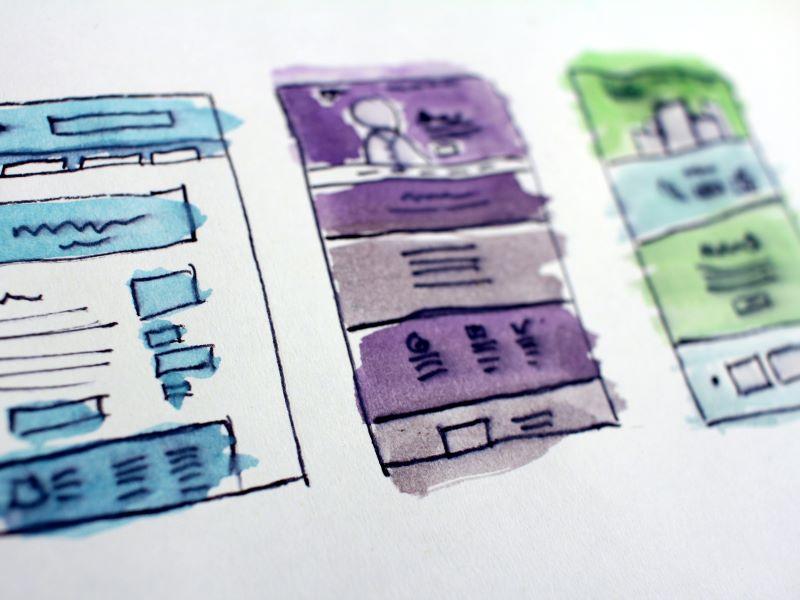
Instructional design advice: how to translate your academic knowledge into an effective online course
The pandemic has fundamentally altered approaches to work, teaching and study. These shifts have accelerated an already growing demand for online courses as learners seek alternative methods of accessing teaching content, with internet searches for “online learning” much higher than pre-pandemic.
Instructional designers take academics’ specialist knowledge and transfer it into an effective online mode of study. Transferring such a wealth of knowledge to an online environment that is very different from the traditional classroom environment is exciting and challenging in equal measure. To help academic colleagues suddenly faced with delivering their teaching online in 2020, my colleagues and I developed a two-week course, How to Create an Online Course, which encapsulates our knowledge and expertise in this field.
Understanding your learners
An important part of the instructional design process is helping academics understand their target audiences. This can be done through the development of personas, which are fictional representations of individuals or groups. Developing personas to represent different learners allows academic teams to take a step back from the content and view it with a fresh perspective. It helps academics understand potential learner needs and expectations of the course, and gives them a clearer vision of who the target audience is. Personas help turn the focus away from instructors’ own biases, by depicting a “typical” learner to keep in mind while creating course content. We develop personas in three steps:
1) Look at behaviours, geo-demographics, assumptions and learner expectations
2) Refine your personas into categories such as hobbyists, career advancers etc
3) Make them realistic; maybe draw on some of your own experiences of working with students.
Diversity in the curriculum
As many online courses are open to all, with no formal entry requirements, audiences can be very diverse, so it’s critical to understand the core market. Instructors should take time to consider how the diversity of the learners could be an asset to the course, for example, through peer-to-peer learning and the sharing of ideas and perspectives in class discussions. Look at what you want to teach and assess whether this meets the needs of the learners on the course. By thinking from the outset about the values, beliefs and attitudes that the course demonstrates, you will ensure that your learners feel represented by what is being taught on the course. Teaching wide and diverse audiences creates an opportunity to challenge the way instructors deliver material. Academics should ensure learners from different backgrounds can see themselves represented within the course and relate to what is being taught. Take some time to consider:
1) To what extent does the course content presume a particular profile or mindset of students and their orientation to the world?
2) To what extent does the course cultivate an appreciation for diverse entry points around a particular subject?
3) What is the demographic profile of authors on the course?
There are many others to add to this, but as a starting point these are important factors to consider when developing an online course.
Active learning
Active learning is a vital component of effective online teaching. It is an umbrella term for prompting students to actively engage with course content rather than passively letting information flow past.
Vehicles for active learning include:
-
Case studies: ask students to work through examples or scenarios using real-world concepts to guide their understanding.
-
Group projects: enable students to work together on specific tasks such as creating an infographic, summary or report.
-
Discussions: encourage learners to interact with each other, respond to each others’ queries and promote friendly debate on course forums.
-
Self-reflection and blogging: allow learners to consolidate their learning and synthesise information. It can be used to encourage reflective practice after an exercise.
-
Peer-to-peer teaching: allow students to offer feedback on peers’ work and encourage discussion around feedback to their answers.
Purposeful design is needed to make sure that these elements are considered from the outset including:
-
Chunking of course content and built-in pauses that enable learners to consolidate their learning
-
Building in exercises with direct feedback from tutors, peers or automated systems
-
Allow space for class discussions within the course.
Students should be taken on a journey through their learning, providing a narrative about what they are learning and why.
Creating engaging content
Engaging and accessible content covers such a broad remit that it could form a whole course on its own, and what is engaging in one module might not be relevant in another. Helping academics understand what they are aiming to deliver, and the needs of the learners, can help with this often daunting task.
Using the ABC learning design method, academic teams work with instructional designers to create a visual storyboard of their course outlining the type and order of learning activities required to achieve the desired learning outcomes. This encourages academics to think about what the course will look like, plan activities and develop the overall course narrative before it is built. This planning process:
-
Helps learners build steadily on their skills
-
Creates a positive user experience
-
Distinguishes “need to know” from “nice to know” content – that is, it identifies what is most relevant to the learner.
As part of the process, the accessibility of content must be considered. Key steps to make sure all learners can participate in the course include:
-
Provide captions for video and audio content and a downloadable transcript
-
Use alt text for all images
-
Make link text short and descriptive
-
Use bullet points to simplify information.
Selecting digital tools
Sometimes less is more. With so many digital tools available, decisions about what to include and what to leave out can be overwhelming. What will enhance the learner experience and what will hinder it? We repeatedly come across these are questions when supporting teams with course development. First, we focus on what the course is trying to achieve. Once this is clearly understood, the right tools to support these aims can be identified. The pedagogy should inform the technology, not the other way around.
The key to creating immersive and engaging online courses is to centre the design around learner needs. We invite all instructors to put themselves in the shoes of their prospective learners and ask: “How would I like to learn?”
Marcello Crolla is an instructional designer at the University of Edinburgh.




